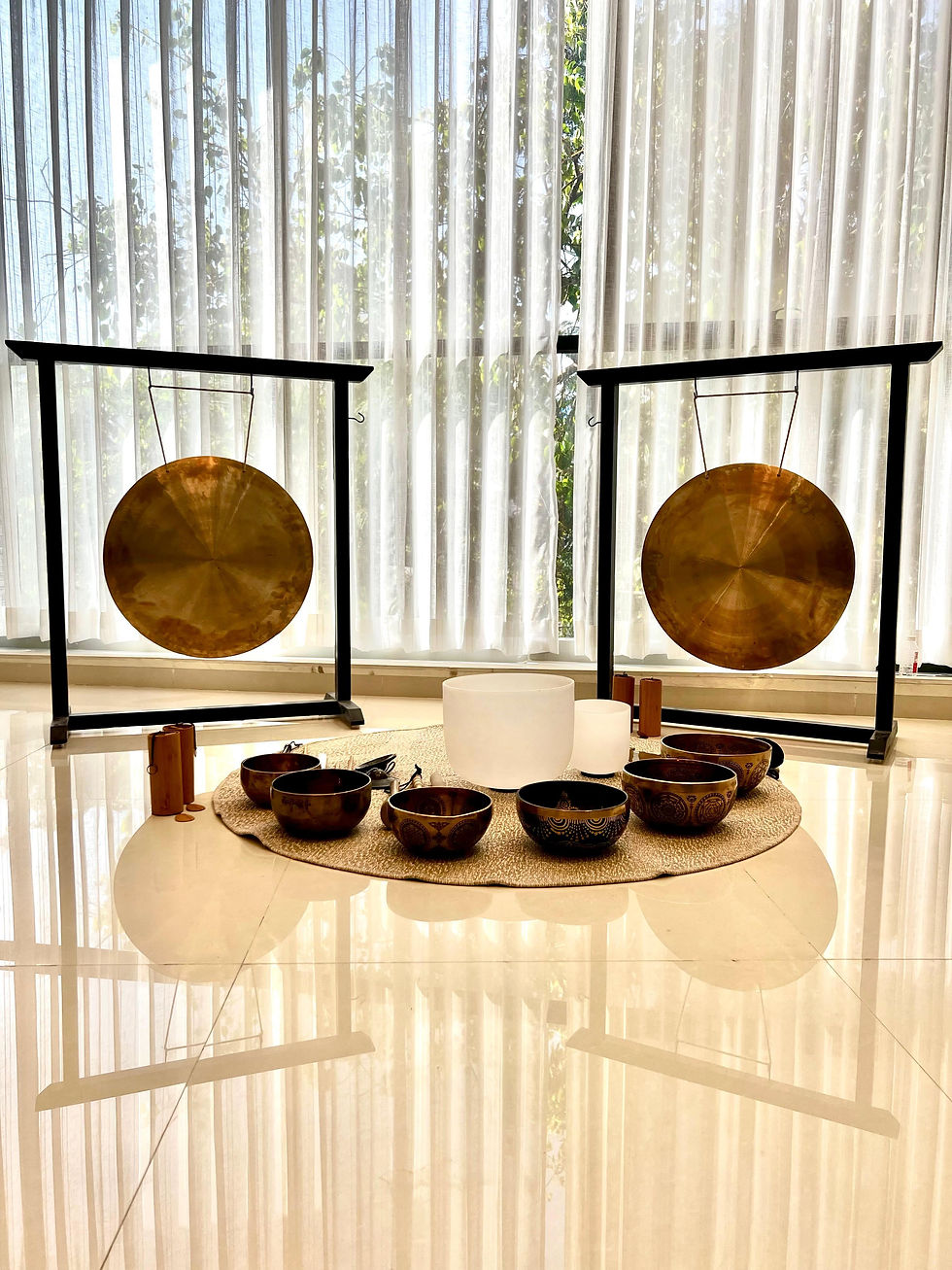How Many Instruments Do You Teach in Your Workshops?
- Sound Healing India
- Apr 12
- 3 min read
A reflection on questions that shape our sound journey

This is a question I’m asked quite often these days.
It’s interesting to notice how the nature of questions evolves with time. A few years ago, most people would ask me things like, “Do you teach using a 7-chakra bowl set or a 9-metal bowl set?” Fast forward to now, and the questions have become more expansive — “How many instruments do you cover in your workshops?”
So here’s my honest answer, from the little that I’ve learned over the past few years — with full humility and the knowing that there’s still a long road ahead.
The Role of Voice in Sound Healing
My core emphasis has always been on exploring the sound of our own voice, especially through the lens of psychology and emotional awareness.I find it deeply fascinating to observe how our thoughts and emotions shape the quality of our voice — and equally, how the sound of our voice can influence the landscape of our inner world.
This space of study, of inquiry, of listening to how our voice shifts across different situations, continues to be the most exciting part of my work.
The Philosophy Behind Instrument Choice
But let’s come back to the question: “How many instruments?”(Yes, I tend to get carried away when I speak about voice!)
Here’s the thing — I don’t believe in limiting ourselves to a single instrument, nor do I believe in collecting and using every instrument just because it’s available.
And no, those two statements are not contradictory.
Not all sound practitioners are trained musicians or percussionists — and that’s perfectly valid. If one is a musician, using a wide array of instruments in harmony with singing bowls and gongs may come naturally.
But for someone like me — who does not come from a musical background — it’s important to understand where to draw a line. Not from fear or limitation, but from respect for the sound journey itself.
Personally, I don’t use percussive elements in my sound healing sessions in any significant way.
I may use a chime, a rattle, or a pulse tube occasionally — usually placed at the beginning or end of a session.
But rarely do I introduce them in the middle of a sound journey. The reason is simple: the nature of their sound differs deeply from that of singing bowls or gongs. The shift in energy can alter a participant’s experience in a way that doesn’t always feel cohesive or intentional.
Awareness Before Instruments
Instead, what I aim to focus on in my workshops is conversation, reflection, and guided exploration — to understand the essence and impact of each sound.
I want to open a space where we listen, not just to the sound an instrument makes, but to how it makes us feel.
This awareness is what allows a practitioner — musician or not — to select instruments with confidence, clarity, and care.
So, How Many Instruments Do I Teach?
Enough to get you curious. Enough to get you listening deeply.
And always, always beginning with the one you were born with — your voice.
If this resonates with you, we'd love to welcome you into one of our sound healing workshop.
%20(1).png)



Comments